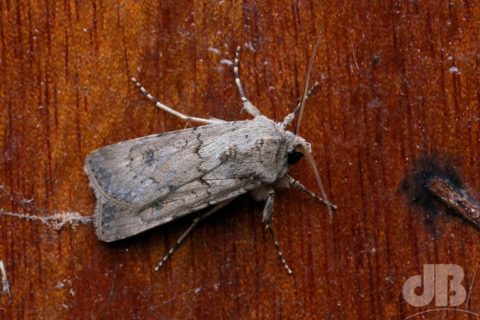This is one of those moths that most readers will just think, “ah, yes, typical moth – boring, grey, brown, ewww”. And superficially, yes, it is not a lot to look at. But, it’s a bit of a rarity and it was drawn to my scientific trap on the night of 31st July 2018 and photographed in the trap the next morning. It’s only recently that my mothing and birding friend Ian was scanning through my Mothematics Gallery and noticed I’d labelled this as queried and not confirmed an ID.

I have now confirmed it as Light Feathered Rustic (Agrotis cinerea, Denis & Schiffermüller], 1775). Indicators are that line about 1/3rd of the way down and also the finger-like projections towards the termen. However, August is well outside the moth’s usual May to June flying season. But, it is suspected of having a second partial brood later in the summer. Moreover, this is a rarity in VC29 (Cambridgeshire) and East Anglia in general.
I spoke to Bill Mansfield the County Recorder, he and others have said it’s definitely A. cinerea. Astonishingly, Bill’s last record for Cambridgeshire was in 1991. He also points out that the only time it was recorded in Huntingdonshire was 1951 and Northamptonshire has no record of it since 2004. He is checking with Bedfordshire.
The species is one of the family Noctuidae, colloquially known as owlets, little owls (Noctua is Latin for little owl). They’re generally night-flying species and their larvae (caterpillars) known as  “armyworms” and “cutworms” are plant pests – they form destructive garrisons of larvae and cut the stems of plants. There are almost 12000 species of owlet moths around the world.